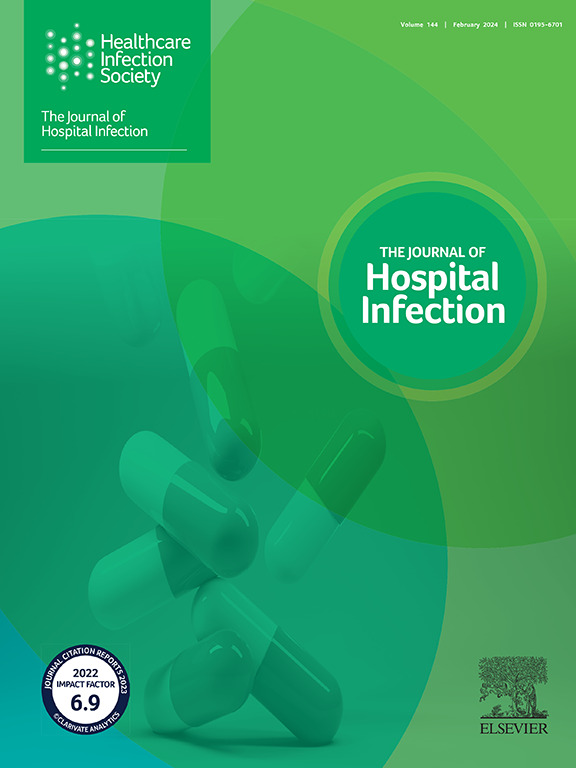新生儿外皮腔静脉导管的可行性锁解决方案:一项“松动”试点研究。
IF 3.1
3区 医学
Q1 INFECTIOUS DISEASES
引用次数: 0
摘要
外壁腔静脉导管在新生儿护理中至关重要,但容易堵塞和感染。本初步研究评估了1小时生理盐水锁,结合适当的冲洗和抗反流连接是否会影响新生儿的导管通畅。使用输注压力(锁前和锁后)作为替代措施评估导管通畅程度。这些发现支持了短锁期的可行性和安全性,从而为将来在新生儿护理中使用抗菌锁溶液奠定了基础。本文章由计算机程序翻译,如有差异,请以英文原文为准。
Feasibility of lock solutions for epicutaneo-caval catheters in neonates: the ‘LOOSEN’ pilot study
Epicutaneo-caval catheters are vital in neonatal care, but are prone to occlusion and infection. This pilot study evaluated whether a 1-h saline lock, combined with proper flushing and anti-reflux connectors, affects catheter patency in neonates. Catheter patency was assessed using infusion pressure (pre- and post-lock) as a surrogate measure. The findings support the feasibility and safety of short lock periods, thereby laying the groundwork for future use of antimicrobial lock solutions in neonatal care.
求助全文
通过发布文献求助,成功后即可免费获取论文全文。
去求助
来源期刊

Journal of Hospital Infection
医学-传染病学
CiteScore
12.70
自引率
5.80%
发文量
271
审稿时长
19 days
期刊介绍:
The Journal of Hospital Infection is the editorially independent scientific publication of the Healthcare Infection Society. The aim of the Journal is to publish high quality research and information relating to infection prevention and control that is relevant to an international audience.
The Journal welcomes submissions that relate to all aspects of infection prevention and control in healthcare settings. This includes submissions that:
provide new insight into the epidemiology, surveillance, or prevention and control of healthcare-associated infections and antimicrobial resistance in healthcare settings;
provide new insight into cleaning, disinfection and decontamination;
provide new insight into the design of healthcare premises;
describe novel aspects of outbreaks of infection;
throw light on techniques for effective antimicrobial stewardship;
describe novel techniques (laboratory-based or point of care) for the detection of infection or antimicrobial resistance in the healthcare setting, particularly if these can be used to facilitate infection prevention and control;
improve understanding of the motivations of safe healthcare behaviour, or describe techniques for achieving behavioural and cultural change;
improve understanding of the use of IT systems in infection surveillance and prevention and control.
 求助内容:
求助内容: 应助结果提醒方式:
应助结果提醒方式:


